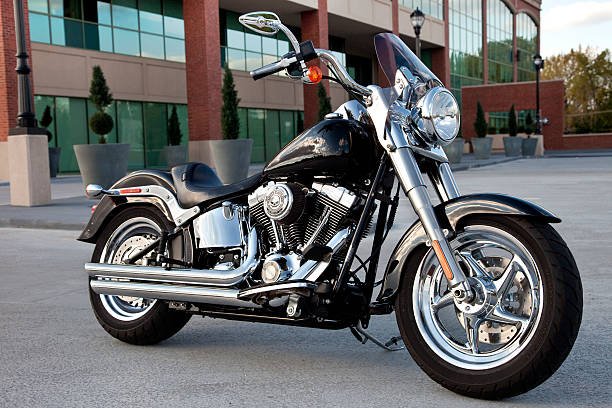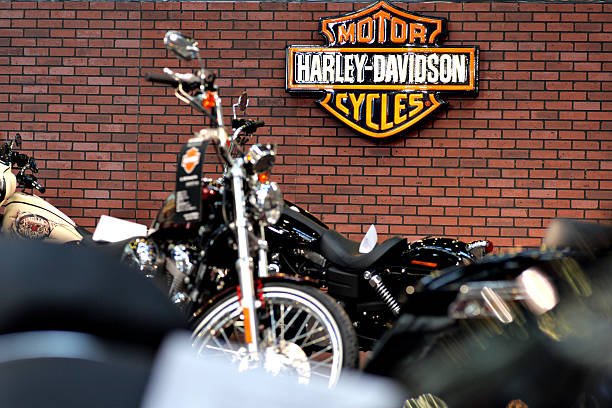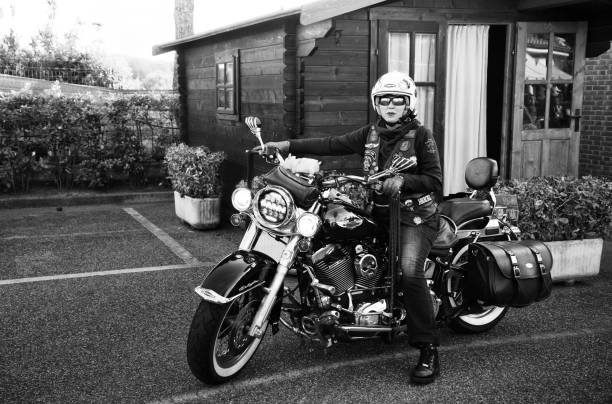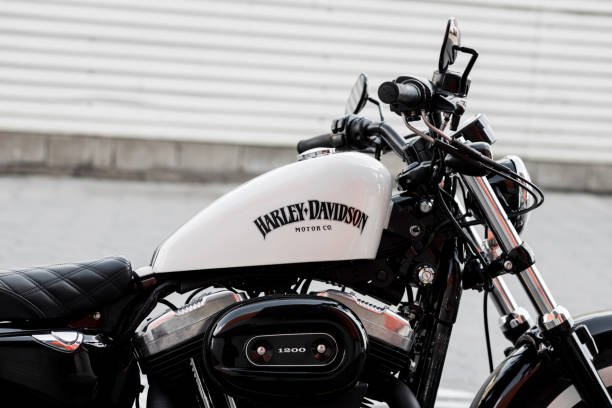Introduction: harley davidson frame types
Harley davidson frame types motorcycles are not in reality machines; they may be embodiments of a subculture, a lifestyle, and a legacy. Crucial to the construction of any Harley is its frame, the skeletal shape that holds the whole thing together. Know-how harley davidson frame types and body sorts are crucial for lovers, riders, and creditors alike. Whether or not you are considering buying a harley davidson frame types or intrigued using their engineering, delving into the intricacies of their body designs unveils a rich tapestry of innovation and tradition.
1. Spine body:
The spine frame is a hallmark of conventional harley davidson frame types design. It has an unmarried piece extending from the headstock to the rear axle, presenting a sturdy guide for the engine and transmission. This body kind underscores the organization’s commitment to durability and balance.
2. Softail body:
Added during the 1980s, the Softail outline changed Harley-Davidson’s arrangement. Intended to imitate the appearance of unbending edges even as integrating present day suspension structures, Softail outlines offer a smoother experience without compromising the regular Harley stylish.
3. Dyna’s body:
Dyna frames strike a balance between conventional rigid harley davidson frame types and the enhanced comfort of Softail designs. Notable for their twin surprise absorbers positioned beneath the seat, Dyna frames provide superior coping with and balance, making them a fave among riders who price both overall performance and style.
4. Journeying body:
Traveling frames are engineered for lengthy-haul comfort and stability, catering to riders who crave journey and exploration. Characterized by using their reinforced construction and incorporated garage booths, journeying frames are designed to endure extended journeys at the same time as presenting sufficient areas for bags and add-ons.

5. Sportster body:
Compact but powerful, Sportster frames are synonymous with agility and performance. At the start, added in the Fifties, those harley davidson frame types are famous for their lightweight construction and responsive coping, making them a famous preference for urban riders and weekend cruisers.
6. Road frame:
Harley-Davidson’s street series represents a departure from the conference, catering to a brand-new era of riders with its sleek layout and concrete sensibility. Street frames are characterized by their compact dimensions and minimalist aesthetics, offering a nimble and maneuverable use of enjoyable perfect-for-town streets.
7. Revolution Max body:
With the advent of the Revolution Max engine platform, Harley Davidson frame types delivered a new body design optimized for performance and versatility. Those frames have characteristics of advanced engineering and lightweight substances, delivering unequaled agility and responsiveness on the road or the tune.
8. Custom frame:
For riders seeking ultimate personalization, custom frames offer a blank canvas for innovative expression. From stretched and raked designs to one-off creations, custom frames encompass the spirit of individuality and craft skills, allowing riders to tailor their Harley Davidson frame types revel into their precise preferences.
9. Trike body:
Trike frames offer a unique riding level, combining the stableness of a three-wheeled layout with the unmistakable style of a Harley-Davidson motorbike. These frames are engineered to provide greater balance and management, making them a super choice for riders with mobility issues or the ones searching for a new adventure on three wheels.
10. Frame materials:
While conventional Harley Davidson frame types are in general made out of metal for durability and strength, cutting-edge advancements have seen the creation of aluminum and composite substances for more desirable overall performance and weight savings. Those substances play an essential position in shaping the characteristics of each body kind, from agility and responsiveness to consolation and longevity.
11. Body Geometry:
The geometry of a Harley-Davidson frame dictates its deal with characteristics, determining factors including guidance responsiveness, stability, and rider ergonomics. From the rake and trail of the front forks to the wheelbase and seat top, every component of body geometry is carefully engineered to supply a balanced and intuitive riding enjoyment.
12. Legacy and Innovation:
As Harley-Davidson continues to adapt, its harley davidson frame types designs mirror a mix of time-honored culture and cutting-edge innovation. From the long-lasting strains of traditional models to the groundbreaking advancements of cutting-edge iterations, each Harley-Davidson frame type embodies the corporation’s relentless pursuit of excellence and its unwavering dedication to the open road.

(FAQ) about Harley-Davidson frame types.
1. What is the significance of Harley Davidson frame types?
Harley-Davidson body types play a crucial function in defining the traits and overall performance of each motorcycle model. From classic designs just like the spine body to fashionable innovations consisting of the Revolution Max platform, body types influence the whole thing from dealing with, and luxury to style and customization alternatives.
2. How do I select the proper body kind for my riding fashion?
The proper body kind for you relies upon different factors, which includes your riding possibilities, supposed use, and personal aesthetic. Riders in search of a conventional appearance with modern-day consolation can also choose a Softail frame, at the same time as the ones prioritizing agility and performance would possibly prefer a Sportster or Dyna frame. Don’t forget factors inclusive of suspension, managing, and seating role whilstrolesecting a body type.
3. Can the Harley-Davidson frame be custom-designed?
Sure, harley davidson frame types provide sufficient opportunities for personalization. Riders can personalize their bikes by means of deciding on aftermarket add-ons, editing frame geometry, or even fabricating completely custom frames. Whether or not it’s a stretched and raked layout or a sleek minimalist aesthetic, the possibilities for personalization are truly infinite.
4. Are all Harley-Davidson frames made from metal?
Even as conventional Harley-Davidson frames are predominantly constructed from steel for strength and sturdiness, current improvements have been visible through the introduction of opportunity materials which include aluminum and composites. These materials provide blessings which include decreased weight and enhanced performance, catering to the evolving wishes and alternatives of riders.
5. What’s the difference between an unflexible body and a soft frame?
Rigid frames, also called spine frames, function as a single piece extending from the headstock to the rear axle, presenting a conventional and robust layout. In contrast, Softail frames incorporate hidden rear suspension systems, presenting the advent of a rigid frame with the consolation and smoothness of current suspension technology.
6. Are there Harley-Davidson body types specifically designed for lengthy long-distance travel?
Sure, Harley-Davidson gives visiting frames designed especially for lengthy-distance journeys. These frames prioritize comfort, stability, and garage ability, making them perfect for riders embarking on extended journeys. Capabilities consisting of integrated storage cubicles, strengthened creation, and ergonomic seating positions cater to the unique desires of touring fans.
7. Am I able to convert my Harley-Davidson motorbike into a trike?
Yes, Harley-Davidson offers trike conversion kits that allow riders to convert their two-wheeled bikes into 3-wheeled trikes. Those kits usually consist of a brand-new rear axle meeting, suspension additives, and extra balance features to ensure a safe and relaxed riding experience. Trike conversions provide an alternative for riders in search of improved balance or those with mobility issues.
8. How do body geometry and design affect the overall motorbike?
Body geometry and design play an extensive function in determining a bike’s managing traits, balance, and rider ergonomics. Elements together with rake, trail, wheelbase, and seat height affect factors like steerage responsiveness, cornering stability, and rider consolation. Expertise in frame geometry is vital for optimizing performance and ensuring a balanced and fun riding enjoyment riding.

Conclusion
know-how Harley-Davidson body kinds aren’t simply approximately recognizing distinct designs; it’s about appreciating the legacy, innovation, and craft skills that outline the emblem. Whether you’re drawn to the undying appeal of a classic backbone body or the futuristic appeal of a Revolution Max platform, each frame type tells a tale—a tale of passion, freedom, and the enduring spirit of Harley-Davidson.

